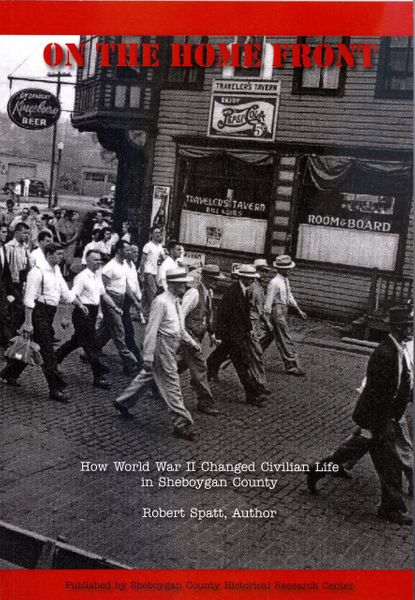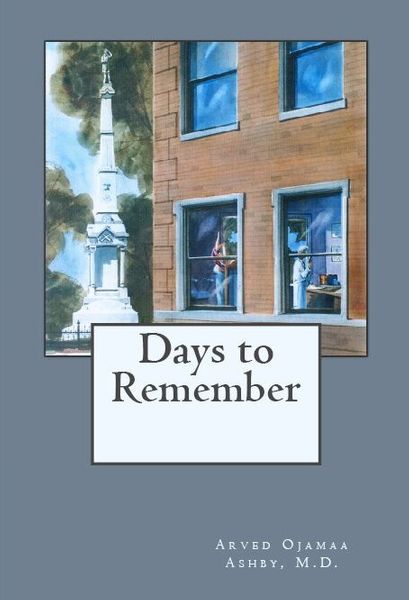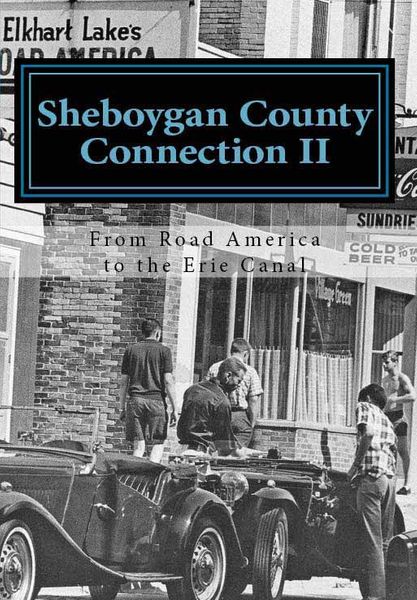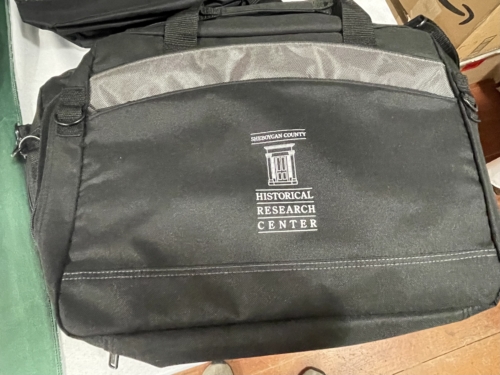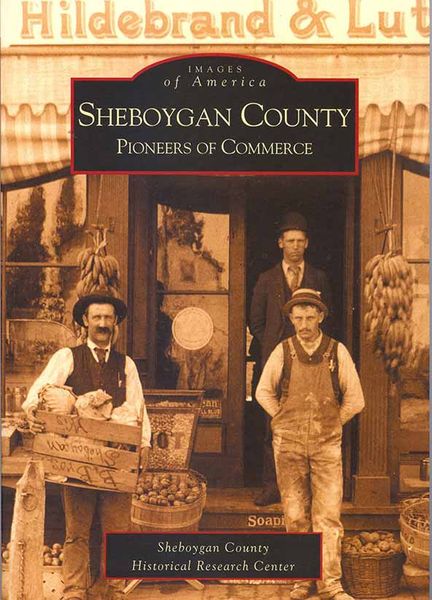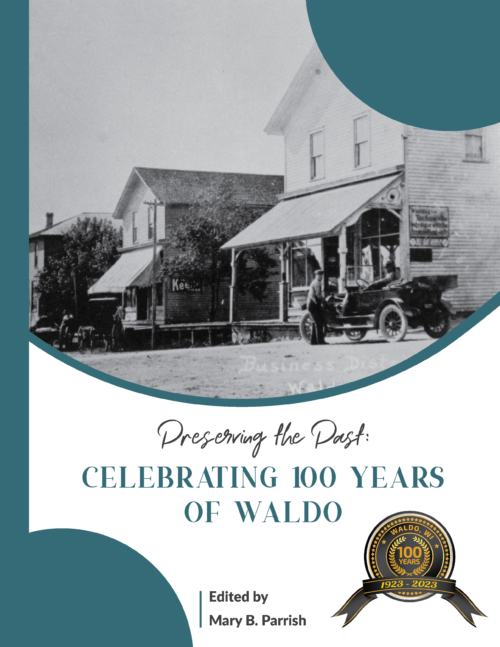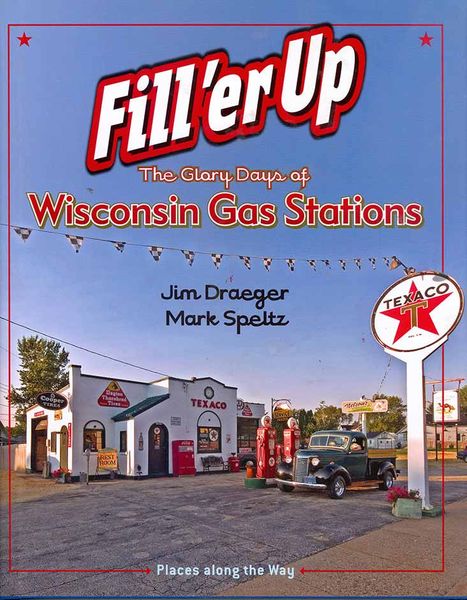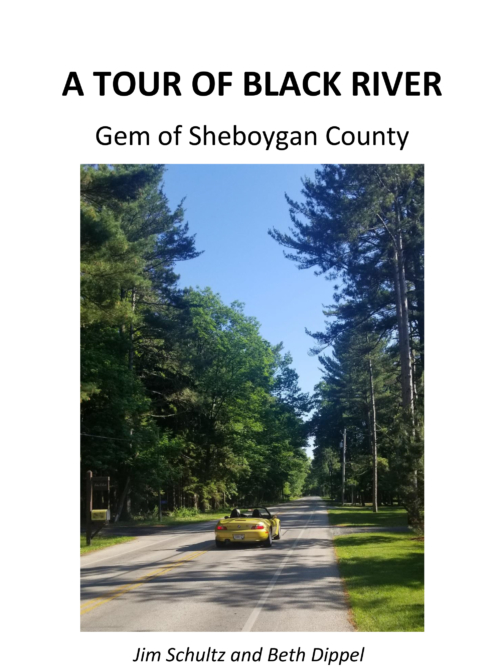-
Days Gone By The Falls - Growing up in small town Wisconsin is John Wirth's poignant, colorful account of growing up in Sheboygan Falls in the 1950s and 1960s. The book features a collection of 39 newspaper columns, which have appeared on a regular basis in The Sheboygan Falls News since 2007. The book takes readers back to a time when imagination, creativity and the pursuit of good, clean fun ruled the lives of youngsters long before the clutches of modern technology swooped in to stifle such endeavors. Wirth paints a vivid portrait of an era in time when people worked hard without question and played hard without considering the possible dangers of youthful exuberance. Readers will meet several colorful characters who inhabited many memorable locales in the quant, picturesque, Midwestern city of Sheboygan Falls. Whether you have your own memories of the 1950s and 1960s or are looking to find out what all the fuss was about, buckle in and enjoy the twists and turns of a real-life, small-town adventure ride going on 60 years in the making.
-
Sheboygan County Connection III is the continuing record of the lives of Sheboygan County residents and their adventures in history. Read about dozens of historic happenings experienced by residents from the death and autopsy of victims of Ed Gein to the mysteries of Sheboygan's Rancho de las Flores, refugees of the Great Chicago Fire of 1871, the architect for the construction of the first Mormon Temple at Nauvoo, Illinois and history of outhouses. These stories ran in the Sheboygan Press from November 2015 to October 2016.
-
by Peter Fetterer
The railroads of Sheboygan County have left behind a legacy of stories … some tragic, some humorous, and some almost unbelievable. The stories bear testimony to the men and women who worked on the early rail lines that served the county … the engineers, firemen, brakemen and conductors who ran the trains … the shop men and track gangs who kept them running … the station agents, freight handlers and railroad officials supporting the operations, and the passengers and hobos who rode the rails.
The railroaders working these lines for nearly 150 years and the passengers riding their trains have been an integral part of our history. These are some of their stories … tales from the rails of Sheboygan County.
-
Sale!
Sheboygan County has a rich and varied Native America past. When the first Europeans arrived, there were probably only about a thousand Indians permanently residing in Sheboygan County, perhaps another thousand during the fishing season on Lake Michigan.
These Indians had relinquished their title to the land by various treaties made with the United States, from 1831 to 1833, but remained here for a number of years until they gradually moved to other locales, as their former hunting and fishing territories disappeared.
What is known of the Indians of Sheboygan County comes mostly from the perspective of white settlers. The Native Americans neither kept nor left any written records; they had no written language forms. What is known of their manner of life, their history and traditions, has come down to us in their myths and legends, through archeological remains, and in the accounts of explorers, missionaries, traders and early settlers. The records of even their white observers are scattered and scanty. They are mainly recitals of their own activities, their references to the Indians usually being only incidental. Much valuable information concerning the life and characteristics of the Indians has been obliterated, although some remains.
This book will share a sampling of the written information gleaned from the archives of the Sheboygan County Historical Research Center.
-
By James E. Schultz. More than a history about Schultz's great grandparents, this book features:
- threads of our German heritage, including food, wine and beer, language, religion, music, dance, and customs woven into the family history and indexed;
- sections devoted to “Why they came”, “Today’s German Attitudes”, and “People and Places”;
- a “Special Find” for each of the eight featured ancestors, a genealogical gem that I uncovered;
- a wide variety of church, government, military, personal, and other resources, with a list of 40 resources cataloged as an appendix; and,
- a section called “Challenges, Tips, and Surprises” that provides helpful pointers for finding information.
-
By Robert Spatt On the Home Front is a chronological account of daily life for Sheboygan residents and how it changed dramatically during WWII. The story is told by way of actual headlines, story excerpts, photographs, editorials and advertisements as published in Sheboygan County newspapers at that time.
-
This is a compilation of articles run in the Sheboygan Press during late 2016 and early 2017. Story titles include: What we used to do at Sheboygan's zoo Remembering Sheboygan County’s forgotten places Interurbans’ meteoric rise, then fall Remembering American wars from the Home Front Memories from a town of Mitchell farm Recalling Sheboygan's unsavory 1920s, 1930s Quirky forgotten laws abound in Sheboygan When bootleggers smuggled margarine Pinehurst Farms boasts rich history Letters to Santa offer look into kids' lives Discovering stories of lost places in Sheboygan County Remembering the architectural trend of octagon houses Appreciation of Grassroots art emerges in recent decades Advertisements reflect culture, paint picture of past Passengers on Orphan Train found home in Sheboygan Dozens of brothels housed in county in early 1900s How Sheboygan cleaned up after hosting brothels
-
Sale!Arved Ojamaa Ashby was born in Estonia on the Finnish Sea on August 8, 1922. Soviet armed forces brutally occupied his home country in 1940, and a carefree and idyllic life gave way to a time of uncertainty, fear, and death. He evaded the Russian draft in 1941 before he joined the military forces that liberated his home country. In 1943, he started his medical studies at the University of Tartu in Estonia. He fled to Finland to escape the German military draft, and fought the Russians as part of the Finnish army. Ashby moved with his young family to Wisconsin, where he opened his medical practice in 1960, at the Sheboygan Clinic. He retired in December 1989, having delivered thousands of babies.This book, a reprint of the two memoirs Capful of Wind and The Wind at my Back, tells Ashby’s traumatic but ultimately successful story – a coming of age story, and a story of emigration and survival. It is an immigrant story like no other.
-
By Bernard Michaels A story of the settlement of the northern Kettle Moraine in Sheboygan County, Wisconsin focusing on the town of Mitchell.
-
This is the second volume in a series. It contains more than fifty stories about Sheboygan County citizens and the amazing ways they participated in important history. Topics range from the 1950s bomb shelter scare to the opening of Road America and Clif Tufte to the opening of the Erie Canal in the 1830s.
-
By Oostburg Historical Society Hundreds of photos of the village of Oostburg. Designed as a companion book to Oostburg, Haven of Hope.
-
Sale!On a cold, cloudy evening, February 20, 1919, Zion Reformed Church in Sheboygan was reportedly "packed to the doors" to hear a concert. The highlight was to be a cantata performed by the Zion Choir, but the program listed them as "assisted" by a new entity: the Sheboygan Community Orchestra, led by John Schmidt, "who certainly needs no introduction," according to the anonymous review published the next day in the Sheboygan Press. In the months to follow, that body of players would be performing on their own, and by the time of their third concert they would be calling themselves the Sheboygan Symphony Orchestra. They are still the SSO, one hundred years after their founding in the fall of 1918: the oldest symphony orchestra still functioning in the state of Wisconsin. They have performed continuously, except for pauses during the Great Depression and in the midst of World War II; and though they were called the Sheboygan Civic (Symphony) Orchestra from 1936 to 1973, there has been a continuity in both personnel and musical vision, linking one generation to the next over a 100-year span.
-
Sale!Wisconsin's 37, The Lives of Those Missing in Action in the Vietnam War. By Erin Miller with John B. Sharpless Foreword by Major General John D. "Don" Logeman (Ret.) The signing of the Paris Peace Accords in 1973 signified the end of the Vietnam War. American personnel returned home and the 591 Americans held captive in North Vietnam were released. Still, 2,646 individuals did not come home. Thirty-seven of those missing in action were from Wisconsin. Using the recollections of the soldiers' families, friends and fellow servicemen, the author tells the story of each man's life.
-
Sale!By Jerry Apps Polio was epidemic in the United States in 1916. By the 1930s, quarantines and school closings were becoming common, as isolation was one of the only ways to fight the disease. The Salk vaccine was not available until 1955; in that year, Wisconsin's Fox River valley had more polio cases per capita than anywhere in the United States. In his most personal book, Jerry Apps, who contracted polio at age 12, reveals how the disease affected him physically and emotionally, profoundly influencing his education, military service, and family life and setting him on the path to becoming a professional writer.
-
Sale!By Fred Zitzer This book documents the Zitzer family's life in Schulz, Russia (also, known as Lugovaya Gryaznukha, Russia). It also details their immigrant trips to the United States. Modern day images of Schulz by Peter and Judy Kaland.
-
Sheboygan County's iron-fisted work ethic began with its earliest residents. From the jackknife trading posts and mill wrights of the early 1800s to the spas and "Great Wall of China" of Kohler Company, the importance of commerce to Sheboygan County is evident. This wonderful pictorial history of the small family-owned business of Sheboygan County begins in the 1870s and ends with a great image of a 1950s American Classic-McDonald's Golden Arches.
-
By Robert Spatt. The City of Sheboygan has many interesting and important "Firsts". This book documents many of those items. There is bound to be a chapter for every interest and although residents of Sheboygan will know many of these firsts, there are a lot of surprises. Some of the firsts are obscure such as the first bratwurst stand, the first department store, the first female principal of a school, the first baby born in Sheboygan; Others, such as the city founder, Farnsworth, and many of the sporting events, maybe remembered by many. The final chapter is entitled “Et Cetera.” Here are little known firsts that don’t fit into any category – Peter Dinkel and his canaries, Clemens Reiss the first to cross the city’s new Eighth Street Bridge in 1923, the street sprinkler who sprayed water on the dusty dirt streets and other obscure first facts. A book to pick up and read a chapter at a time then casually sprinkle conversations with a “did you know that….”
-
The cheese industry has been very important to Sheboygan County, Wisconsin since the 1870s. This is a history of the industry in the county. It is divided by townships and lists some 210 different factories that existed over time. It deals with cheese making in the home, the development of cheese factories, factories and their locations, cheese makers, the cheese making season, tools and equipment, the growth of the industry, cheese exchanges, types of cheese and much more
-
By Peter Laun
Elkhart Lake, Wisconsin, home to Road America today, was once a summer vacation retreat to thousands of city dwellers from Chicago, Milwaukee and St. Louis. The trains and interurban brought them to enjoy the cool breezes and waters of Elkhart Lake, Crystal Lake and Little Elkhart Lake. This volume discusses Joseph Moore, the founder and many other colorful characters of the village. It reminds us of Villa Gottfried, the Schwartz Hotel, Siebken's, Pine Point, Osthoff and Camp Brosius. Photos accompany each story.
-
By Elmer Koppelmann The village of Howards Grove began as two separate villages, Howards Grove and Millersville. Not until 1967 did the two unite into one incorporated village. The first European settlers to settle in the town of Herman (originally named Howard) were the "Lippers"- a group of 13 families and seven orphaned young people from Lippe-Detmold, Germany. The year was 1846, and the group's leader was Friedrich Reineking. They settled on the land that is now Lakeland College. This volume brings the history of the area back to life, and documents the families and businesses that, today, make up Howards Grove.
-
By Bernard Michaels
The poignant story of immigration and settlement of the Irish in Sheboygan County, this book gives an account of the Byron-Lima Settlement, a span of some thirty miles in which over 600 Irish families settled. The community's irregular borders ran from Kennedy's Corners in Lima to the frame church of Byron's St. John. The town of Mitchell, Sheboygan County is at the heart of this story.
-
Out of Stock
By Peter Laun and the Elkhart Lake Historic Race Circuits Preservation Society.
After WWII, open road racing gained popularity all over the United States due to the influx of European sports cars purchased by American veterans who had experienced the thrill of road racing overseas. The driving force behind the growth of the sport in America and the main organizer of these races was The Sports Car Club of America (SCCA). A Midwest course was deemed necessary for racers, and Elkhart Lake, Wisconsin was chosen as the site. In 1949 the Milwaukee chapter of the SCCA and the Chamber of Commerce of the Village of Elkhart Lake planned the first road race at Elkhart Lake, scheduled for July of 1950. These open road races lasted from 1950-1952, when they were deemed too dangerous for spectators and drivers.
-
“Cedar Grove, Wisconsin, 150 Years of Dutch-American Tradition,” has been updated and reprinted. Three new chapters entitled, “Historical Update, Old News and The Royal Visit” have been added. The new publication will be available for sale at a discounted price during the festival at the following locations: Holland Festival Souvenir Stand, Het Museum, Te Ronde House Museum, Oma’s on Main Restaurant, Cedar Grove Library and the Union Dollar General Store.
-
By Plymouth Historical Society and SCHRC
Plymouth, originally considered a “hub” city because of the hub and wheel factory located there, it has also earned that moniker because of its central location between Milwaukee and Green Bay. Tourists flock to Plymouth year round to visit the variety of shops, to golf, swim and ski, or explore the beautiful Kettle Moraine State Forest. Residents are proud of their heritage, which can be seen at sites throughout the city. Visit Plymouth through this wonderful tribute using historic photographs.
-
By Bill Wangemann Sheboygan deserves its reputation as a conservative city, quiet and law abiding. But here are some stories from the past that have been swept under the rug or lost overboard. Venture into the mists of the Lake Michigan Triangle that have swallowed boats, planes and entire tribes. Investigate speakeasy shootings, safes burgled by a flyswatter, poisoned Christmas candy and the hoax that had militiamen firing on their own cattle. Or just sit down with some bizarre anecdotes about a hometown you though you knew, from the town’s first baseball game to the man freed from jail by a jug of whiskey to the deputy sheriff who had to enforce Nicholas Hoffman’s first bath in fifty years.
-
By Gustave Buchen
Considered the quintessential book on Sheboygan County history, this volume by Gustave Buchen, was written in 1944, when many of the original settlers were still alive. The information is well documented and tells the story of Sheboygan County's first years. The book includes an index, maps of early Sheboygan County and drawings. 2015 Reprint.
-
Originally platted as the village of Rochester, Sheboygan Falls took shape in the late 1830s and 1840s. Settled by Yankee entrepreneurs from the East, "Sheboygan at the Falls" was a strong settlement from the beginning, surviving even the financial panic of 1837. A city of Greek Revival and Cream City brick architecture, Sheboygan Falls boasts two districts listed on the National Historic Register
-
Sale!By Jim Draeger and Mark Speltz The authors visit 60 Wisconsin gas stations that are still standing today and chronicles the history of these humble yet ubiquitous buildings. The book tells the larger story of the gas station's place in automobile culture and its evolution in tandem with American history, as well as the stories of the individuals influenced by the gas stations in their lives.
-
By Rick Kroos This autobiography by Rick Kroos takes you from his childhood home in the city of Sheboygan to Vietnam to Hong Kong, where he has lived most of his adult life. It is a wonderful and inspirational story from beginning to end.
-
By Brian Leahy Doyle In Encore! The Renaissance of Wisconsin Opera Houses chronicles the histories of ten Wisconsin opera houses and theaters, from their construction to their heydays as live performance spaces and through the periods when many of these stages went dark. But what makes these stories so compelling is that all but one of the featured theaters has been restored to its original splendor.






